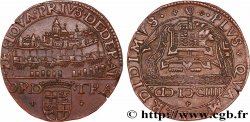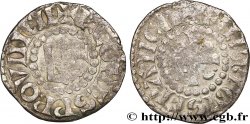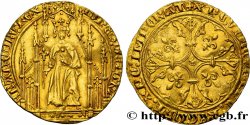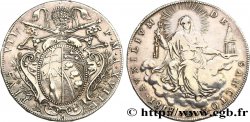Live auction - fwo_520032 - NETHERLANDS - UNITED PROVINCES - UTRECHT 14 Gulden ou cavalier d'or 1751 Utrecht
You must signin and be an approved bidder to bid, LOGIN TO BID. Accounts are subject to approval and the approval process takes place within 48 hours. Do not wait until the day a sale closes to register. Clicking on "BID" constitutes acceptance of the terms of use of cgb.fr private live auctions.
Bids must be placed in whole Euro amounts only. The sale will start closing at the time stated on the item description; any bids received at the site after the closing time will not be executed. Transmission times may vary and bids could be rejected if you wait until the last second. For further information check the Live auction FAQ
All winning bids are subject to a 18% buyer’s fee.
All winning bids are subject to a 18% buyer’s fee.
| Estimate : | 1 000 € |
| Price : | 1 010 € |
| Maximum bid : | 1 110 € |
| End of the sale : | 26 January 2021 22:14:38 |
| bidders : | 4 bidders |
Type : 14 Gulden ou cavalier d'or
Date: 1751
Mint name / Town : Utrecht
Quantity minted : -
Metal : gold
Millesimal fineness : 917 ‰
Diameter : 28 mm
Orientation dies : 12 h.
Weight : 9,90 g.
Edge : cordonnée
Rarity : R1
Coments on the condition:
La monnaie a été vigoureusement nettoyée et présente des traces de montures limées sur la tranche. Le flan est un peu voilé
Catalogue references :
Obverse
Obverse legend : (ÉCU) MO: AUR: PRO: CONFŒD: - BELG: TRAIECT..
Obverse description : Cavalier à droite bondissant, en armure et brandissant une épée ; au-dessous, un petit écu couronné aux armes d'Utrecht.
Obverse translation : (Nouvelle monnaie d'or de la confédération belge Utrecht).
Reverse
Reverse legend : CONCORDIA RES PARVÆ CRESCUNT - 17-51.
Reverse description : Écu couronné, accosté de 14 - GL.
Reverse translation : (Grâce à la Concorde les choses peuvent croître) .
Commentary
Ce type, créé en 1749, fut frappé en 1750, 1751, 1760, 1761 et 1763. Le chiffre de 545.000 pièces comprend les millésimes 1760 et 1761. Un petit reliquat de 11.500 pièces fut encore fabriqué en 1763. Ces pièces connurent un grand succès aux Pays-Bas et dans les Indes Néerlandaises. C'est une monnaie destinée au grand commerce international.







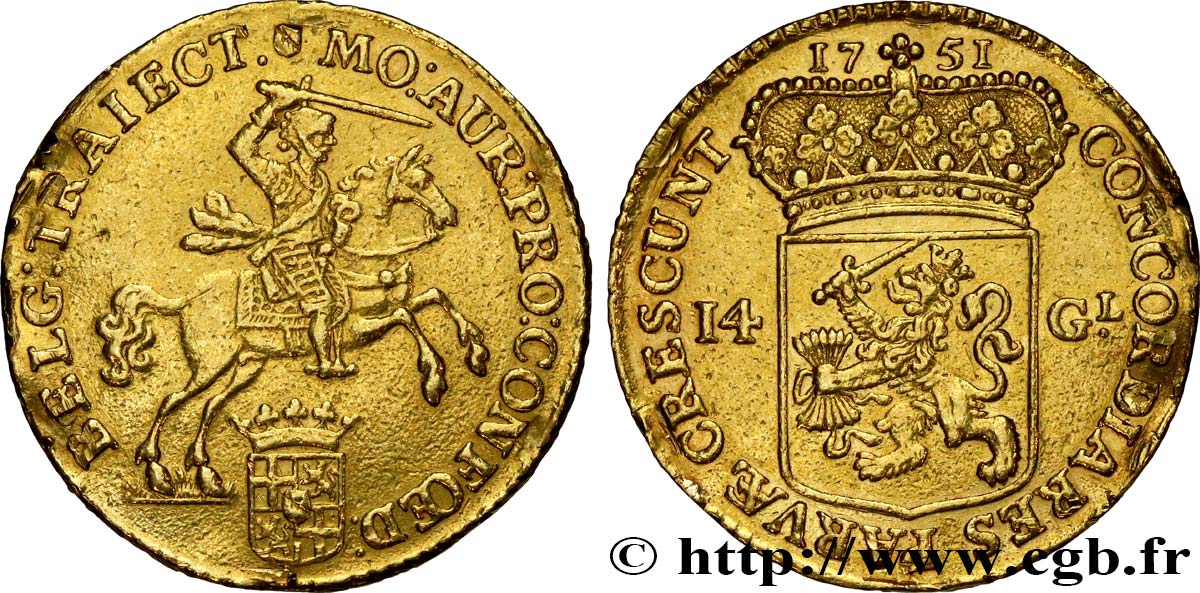
 Report a mistake
Report a mistake Print the page
Print the page Share my selection
Share my selection Ask a question
Ask a question Consign / sell
Consign / sell
 Full data
Full data